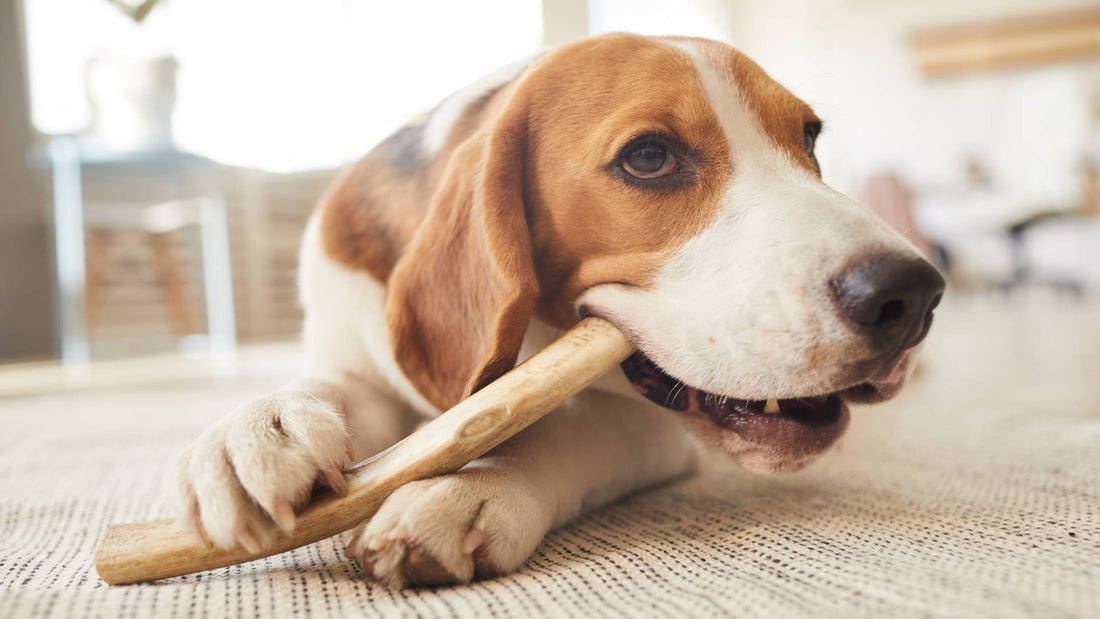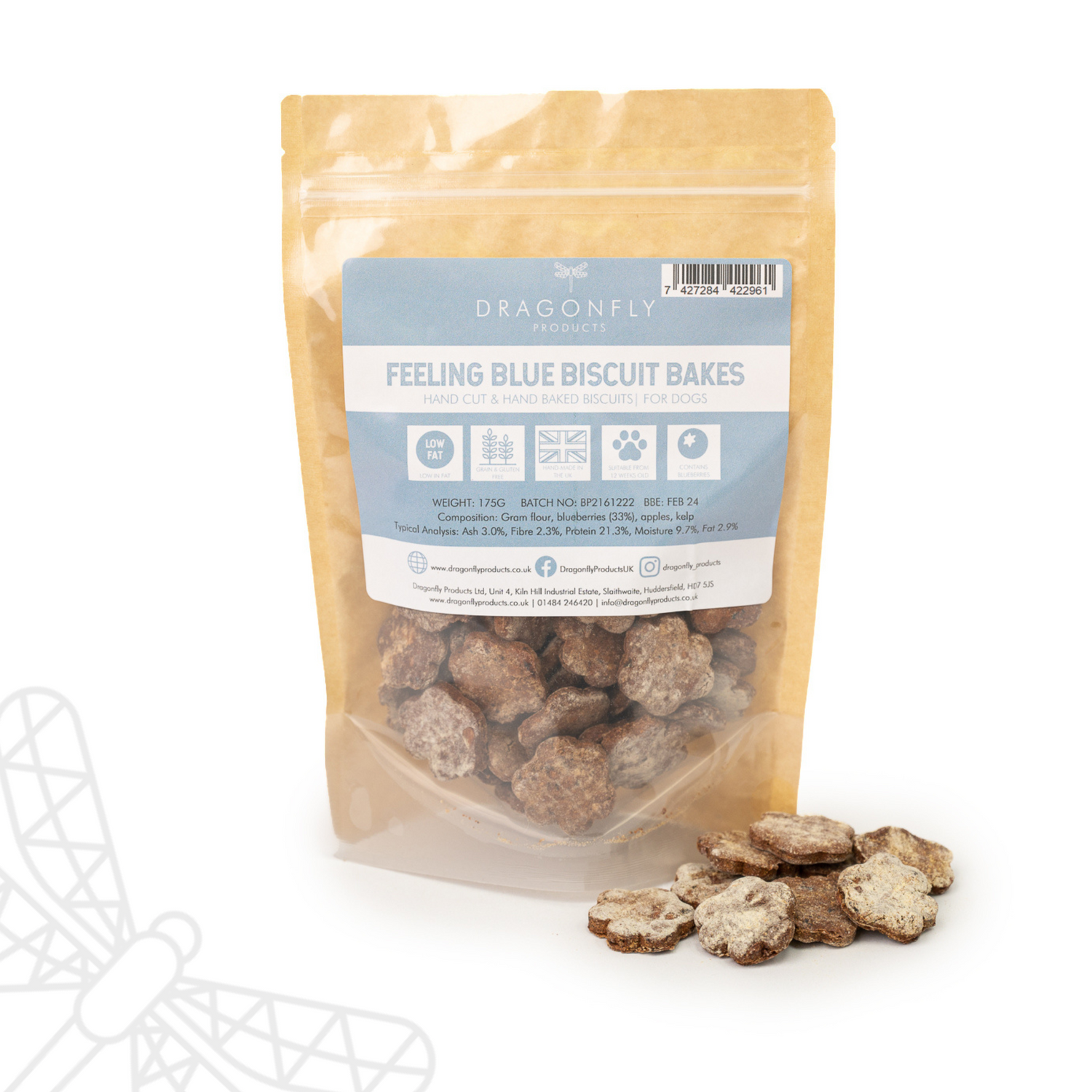
How to stop my dog chewing
For many dog owners, coming home to find chewed-up furniture is a frustrating and perplexing experience. While it's natural for dogs to chew, understanding the reasons behind this behaviour is crucial for addressing and preventing it. In this article, we'll explore the common reasons why dogs chew on furniture and provide practical tips on how to curb this behaviour.
Table of Contents
- Why does my dog chew on furniture?
- Is chewing on furniture a sign of separation anxiety?
- How can I stop my dog from chewing on furniture?
- Are there specific dog breeds more prone to chewing on furniture?
- Should I punish my dog for chewing on furniture?
- Can chewing on furniture be harmful to my dog?
- Is chewing on furniture a sign of a nutritional deficiency?
Why does my dog chew on furniture?
There are several reasons why your dog may chew on furniture. For puppies, it is usually a teething issue, so they will chew on things to ease discomfort. In older dogs, it could be due to anxiety, boredom, or a need to maintain jaw strength.
1. Instinctual Behaviour
Dogs have a natural instinct to chew, which stems from their ancestry as hunters and scavengers. Chewing helps them explore and interact with their environment, maintain dental health, strengthen jaw muscles, and provide mental stimulation. This instinct persists in domesticated dogs and may manifest as chewing on household items like furniture.
2. Teething
Puppies, in particular, go through a teething phase, usually between three and six months of age. During this period, their gums may become sore and itchy, leading them to seek relief through chewing. Providing appropriate chews or toys and regularly checking their mouth for discomfort can help redirect their chewing behaviour. We love split deer antlers and pizzles for teething pups!
3. Boredom and Lack of Stimulation
Dogs, especially active breeds, can become bored when left alone for extended periods. In the absence of mental and physical stimulation, they may resort to chewing as a way to alleviate boredom. Regular exercise, interactive toys, and puzzle feeders can keep your dog engaged and reduce the likelihood of furniture chewing.
4. Separation Anxiety
Dogs are social animals that form strong bonds with their human companions. When left alone for long periods, some dogs may experience separation anxiety, leading to destructive behaviours like chewing. Addressing separation anxiety may involve gradual desensitisation to being alone, using comfort items, or seeking the assistance of a professional dog trainer or behaviourist.
5. Attention-Seeking Behaviour
Dogs may resort to chewing as a way to get attention, even if it's negative attention. If your dog associates chewing on furniture with getting a reaction from you, it may continue the behaviour. Positive reinforcement for good behaviour and redirection to appropriate chew toys can help break this cycle.
6. Medical Issues
In some cases, excessive chewing may be a sign of underlying health issues, such as dental problems or gastrointestinal discomfort. If you notice a sudden increase in chewing behaviour, it's advisable to consult with a veterinarian to rule out any potential medical causes.
Is chewing on furniture a sign of separation anxiety?
Yes, chewing on furniture can indeed be a sign of separation anxiety in dogs. Separation anxiety occurs when a dog becomes distressed or anxious when left alone or separated from their owner. This condition can lead to various destructive behaviours, including chewing on furniture.
When a dog with separation anxiety is left alone, they may chew on furniture as a way to cope with their stress and anxiety. The act of chewing can be self-soothing for the dog, helping them to alleviate their discomfort. In some cases, the dog may focus their chewing on items that carry their owner's scent, such as furniture or personal belongings, as these objects provide a sense of comfort.
It's important to distinguish separation anxiety from other causes of chewing, such as boredom, teething, or a natural inclination to chew. Separation anxiety is typically accompanied by other signs, such as excessive barking, whining, pacing, drooling, or attempts to escape. These behaviours usually occur specifically when the dog is left alone or anticipates being left alone.
If you suspect that your dog's chewing is related to separation anxiety, it’s crucial to address the underlying anxiety rather than just trying to stop the chewing. Behavioural training, gradually desensitising the dog to being alone, and providing plenty of physical and mental stimulation can help.
How can I stop my dog from chewing on furniture?
Addressing and preventing furniture chewing in dogs requires a combination of strategies that focus on redirecting their natural chewing instincts, providing alternatives, and addressing any underlying issues that may contribute to the behaviour. Here are some effective tips to help stop your dog from chewing furniture:
Provide Appropriate Chew Toys:
Offer a variety of safe and durable chew toys for your dog. Look for toys that are designed to promote dental health and are suitable for your dog's size and chewing style. Rotate the toys regularly to keep them interesting and novel for your dog.
Provide Long Lasting Natural Chews
If your dog enjoys chewing on wooden furniture, consider providing natural and long-lasting wooden chews like Olive Wood Dog Chews and Root Chews. These chews are 100% natural and free from toxic chemicals. Other long-lasting chews, such as Yak Bars and Lamb Horns, are also great alternatives to your furniture.
Use Bitter Sprays or Deterrents
Apply pet-safe bitter sprays or deterrents to the furniture your dog is prone to chewing. These products have a taste and smell that dogs find unpleasant, discouraging them from chewing on treated surfaces.
Even better, make your own spray using Apple Cider Vinegar or Lemon Juice. Using a clean spray bottle, mix 2 cups of lemon juice with 1 cup of white vinegar, or 2 cups of apple cider vinegar with 1 cup of white vinegar. Lemon juice smells nicer around the home, but apple cider vinegar can sometimes be more effective. The bitterness from either should deter your puppy or dog from wanting to chew anything that’s been sprayed.
Supervise and Manage Environment
When you cannot directly supervise your dog, consider confining them to a safe space, such as a crate or a dog-proofed room. This limits their access to furniture and reduces the likelihood of destructive behaviour.
Use baby gates or pet barriers to restrict access to certain areas of the house.
Exercise and Mental Stimulation
Ensure your dog gets enough physical exercise through walks, playtime, and other activities. A tired dog is less likely to engage in destructive behaviours out of boredom.
Incorporate mental stimulation into your dog's routine with puzzle toys, interactive feeders, or training sessions. Enrichment toys can be a great way to tackle boredom and keep your dog entertained. Lickimats can be frozen to last even longer! The motion of licking the mat also releases a feel-good chemical in the brain, which helps relax your dog.
Training and Positive Reinforcement
Teach your dog basic obedience commands, such as "leave it" and "drop it." Consistently use positive reinforcement, rewarding good behaviour with natural treats or praise.
Redirect your dog's attention to appropriate chew toys when you catch them in the act of chewing furniture. Reinforce and reward them for choosing the correct items.
Address Anxiety and Boredom
If your dog is chewing due to separation anxiety, gradually desensitize them to being alone. Start with short periods and gradually increase the time.
Consider enlisting the help of a professional dog trainer or behaviourist, especially if the chewing behaviour is linked to anxiety or stress.
Consult with a Veterinarian
If the chewing behaviour persists or is sudden and severe, consult with your veterinarian to rule out any potential medical issues, such as dental problems or gastrointestinal discomfort.
Modify the Environment
Make the furniture less appealing by using furniture covers, anti-chew sprays, or double-sided tape. These methods can create an undesirable texture or taste.
Be Consistent
Consistency is key when training your dog. Enforce rules consistently and reward positive behaviour promptly. Inconsistency can confuse your dog and make training less effective.
Are there specific dog breeds more prone to chewing on furniture?
Certain dog breeds are indeed more prone to chewing on furniture due to their natural instincts and characteristics. Breeds that are known for their high energy levels, strong prey drives, or a need for mental stimulation are often more likely to engage in destructive chewing behaviours if their needs are not met.
For example, Labrador Retrievers, Beagles, and Terriers are among the breeds commonly associated with chewing. Labrador Retrievers are known for their high energy and strong chewing instincts, which were originally bred for retrieving tasks. Beagles have a strong prey drive and a natural curiosity, which can lead them to chew on objects as they explore their environment. Terriers, on the other hand, were bred for hunting and have a high level of determination and energy, making them more prone to chewing if they’re not adequately stimulated.
However, it's important to note that while these breeds may have a predisposition towards chewing, any dog can develop this behaviour.
Should I punish my dog for chewing on furniture?
Punishing your dog for chewing on furniture is generally not recommended and can be counterproductive. While it might seem like a straightforward solution, punishment often fails to address the root causes of the behaviour and can lead to negative consequences.
Firstly, punishment does not teach your dog what they should do instead. Chewing is a natural behaviour for dogs, and simply punishing them does not redirect their instinctual need to chew. Instead, it’s more effective to provide appropriate alternatives, such as chew toys, to fulfill their need in a positive manner.
Secondly, punishment can lead to fear and anxiety. If your dog is punished for chewing, they may become anxious or fearful, especially if the punishment is not immediately linked to the behaviour. This can result in increased stress, which may exacerbate destructive behaviours or even lead to other behavioural issues.
Additionally, if the punishment is not timely or consistent, your dog may not connect the punishment with the chewing behaviour. For instance, if you only catch your dog in the act of chewing and then scold them, they may not understand why they are being punished, leading to confusion and potential fear of you or the environment.
Instead of punishment, focus on positive reinforcement and proactive management.
Can chewing on furniture be harmful to my dog?
Yes, chewing on furniture can indeed be harmful to your dog. While chewing is a natural behaviour for dogs, particularly for puppies and breeds with strong chewing instincts, it can pose several risks to their health and well-being when it involves inappropriate items like furniture.
One of the primary concerns is the potential for physical harm. Furniture often contains materials such as wood, metal, nails, screws, or upholstery. If your dog chews on these materials, they risk ingesting sharp or toxic objects, which can lead to serious health issues. For example, swallowing pieces of wood or metal can cause gastrointestinal obstructions or internal injuries. Ingesting staples, nails, or other small parts can lead to severe complications and may require emergency veterinary intervention.
Additionally, the chemicals and finishes used in furniture can be harmful if ingested. Many pieces of furniture are treated with paints, stains, or varnishes that contain potentially toxic substances. If your dog chews on or swallows these materials, it can result in poisoning or toxic reactions, which might manifest as vomiting, diarrhoea, lethargy, or more severe symptoms depending on the chemical involved.
Chewing on furniture can also lead to dental issues. Regularly chewing on hard surfaces can wear down your dog’s teeth, cause broken or cracked teeth, or lead to dental infections. Dental problems can be painful and might require veterinary dental care or even surgery.
In addition to physical harm, chewing on furniture can contribute to behavioural problems. If a dog is consistently allowed to chew on furniture, it can reinforce destructive habits and make it more difficult to redirect their chewing behaviour to appropriate items. This can also create stress and anxiety for both the dog and the owner, especially if the damage to the furniture is significant.
Is chewing on furniture a sign of a nutritional deficiency?
Chewing on furniture is not commonly a direct sign of nutritional deficiency, but there are cases where it could be related to underlying dietary or health issues. Generally, chewing behaviour in dogs is more commonly associated with natural instincts, boredom, anxiety, or teething rather than a specific lack of nutrients.
Pica is a condition where dogs eat non-food items, which can sometimes be linked to nutritional deficiencies. For example, a lack of essential minerals such as calcium or phosphorus might lead a dog to chew on unusual objects. However, pica is relatively rare and is usually accompanied by other signs of nutritional imbalance or health problems.
Remember, patience and positive reinforcement are crucial in modifying your dog's behaviour. It may take time for your dog to break the habit of chewing on furniture, so stay consistent in your efforts and provide plenty of positive reinforcement for good behaviour.
For any further help and advice please contact us on 01484 246420 and why not join our social media channels and online community on Instagram, Facebook or YouTube.
With Wags and Woofs,
Laura, Dolly & Reggie








